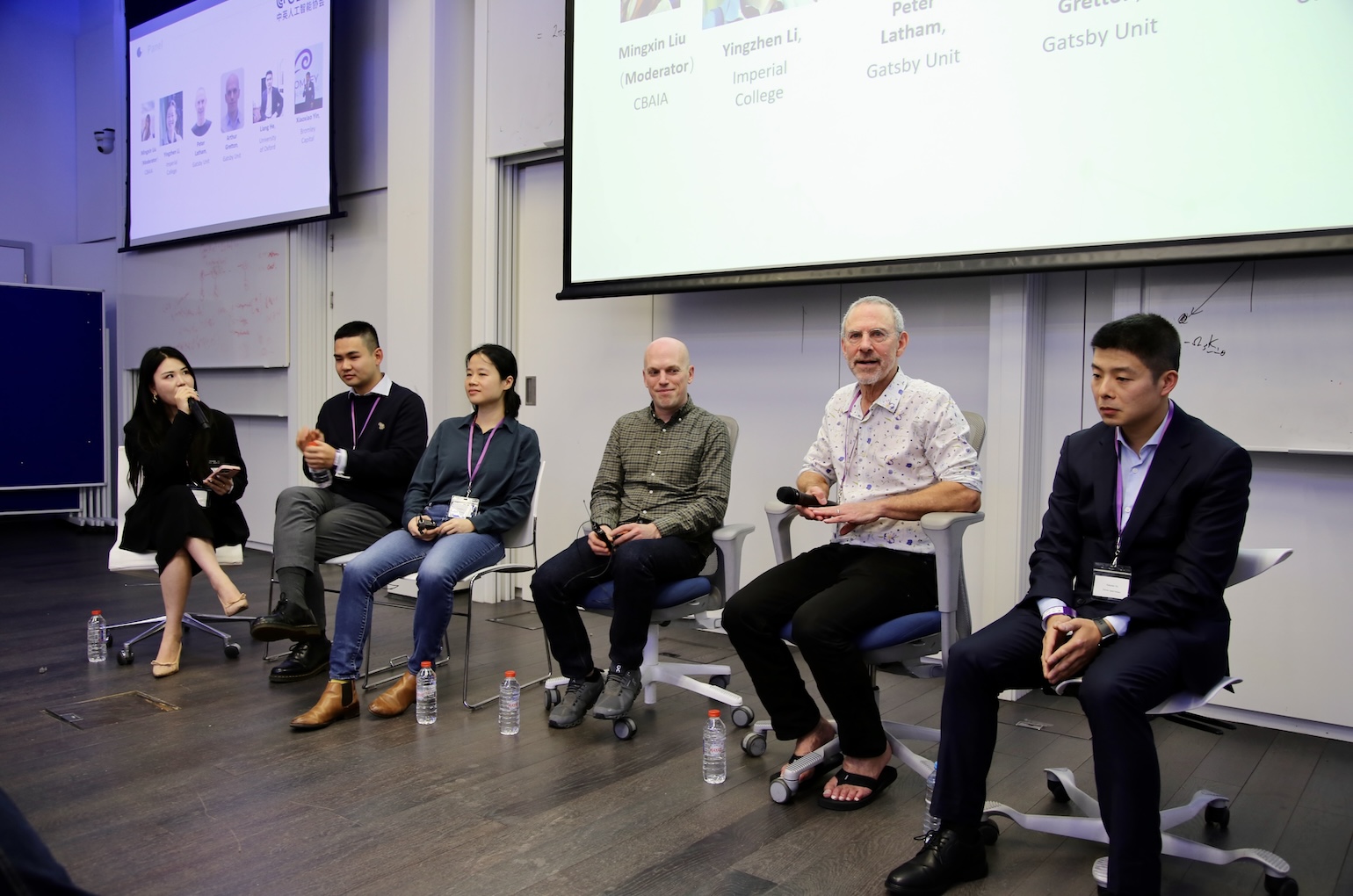 AI Accuracy, Other Hot AI Topics Come Under Spotlight at CBAIA Conference
AI Accuracy, Other Hot AI Topics Come Under Spotlight at CBAIA Conference(Yicai) Nov. 11 -- How to improve the accuracy of artificial intelligence and its successful application in different sectors were among the pressing topics discussed by experts in academia and finance who gathered at the recent annual conference of the China-Britain Artificial Intelligence Association in London.
One of the primary challenges in AI research, and particularly in causal AI, lies in uncertainty quantification, Arthur Gretton, professor of machine learning at University College London, told Yicai at the conference, which had the theme “Crowning AI with Data.”
While AI can make predictions on various issues, such as the efficacy of a drug or the impact of a policy, it often fails to accurately assess the uncertainty of these predictions, Gretton said. As a result, there’s a significant chance of error in its forecasts.
“This is, I think, one of the biggest future challenges of research in AI, and it is one of the topics that my group is exploring,” Gretton said.
Another challenge, he added, is statistical guarantees. Gretton's team is also studying what sort of models will continue to improve as they process more data, which he noted as a “huge challenge.”
Relationships Between Variables
In terms of disease treatment, Gretton gave the case of a disease that can be either mild or severe. Doctors tend to determine treatments depending on severity. Mild cases will receive medication while severe cases require surgery. In general, the cure rate for medication is 85 percent and that for surgery is 72 percent.
Seeing these figures, hospital administrators might conclude that medication is the better treatment, as it’s not only more effective but also generally less expensive than surgery. They might then decide that all patients should receive medication.
However, this decision ignores the relationship between treatment type and disease severity, where mild cases are suited to medication, and severe cases require surgery. Administering medication to all patients would significantly reduce treatment efficacy because severe cases would not receive the surgery they need.
This case highlights a lesson for AI researchers and practitioners, he said. If data analysis does not fully consider relationships between variables—such as treatment type and disease severity—it can lead to flawed conclusions. The hospital administrators’ intervention disrupts the link between treatment type and disease severity, resulting in poor decision-making and ineffective treatment. It’s crucial, therefore, to carefully examine relationships between variables to avoid oversimplifying complex scenarios.
In terms of data processing and AI applications in finance, if AI models perform well, companies stand to earn substantial profits, said Chu Yangchun, chief operating officer of DBdolphin.
A typical quantum hedge fund or trading desk handles vast amounts of data, including trade orders, corporate financial data, and other information, Chu said. Through these datasets, teams develop multiple factors and apply them to various models to predict returns. Based on model predictions, they generate trading signals. If these models accurately forecast returns, firms can make a lot of money.
Human Brain Template
“The use of neuroscience in order to properly understand machine learning is not very developed. I think the brain is so hard to understand,” Gretton told Yicai at UCL’s Gatsby Computational Neuroscience Unit where the conference was held.
Nonetheless, Gretton believes that the human brain provides a valuable template for researchers, as it can perform extraordinarily complex tasks with minimal energy consumption. “It gives us a goal to work towards,” he said.
Founded in 1998 with support from the Gatsby Charitable Foundation, the Gatsby Computational Neuroscience Unit was co-founded by Geoffrey Hinton, a Turing Award winner and Nobel prize laureate known as the “Godfather of AI.” The unit is dedicated to understanding the neural mechanisms of brain computation by integrating neuroscience, mathematics, and machine learning to explore how neural circuits process information, learn, make decisions, and produce perception and behavior.
The CBAIA, a UK-registered nonprofit and one of the largest Chinese technology associations in the country, organized the event. The association aims to foster AI-related exchanges among Chinese professionals in the UK and promote collaboration between Chinese and British academia and industry in the field of AI.
Editor: Kim Taylor